When you watch a movie or a television series, you think it is the easiest thing in the world. But that is because parents on TV make it look so easy. The baby cries, and the parents stick a pacifier in their mouth, and that is that. But in reality, it is not as easy. How to get your baby to take a pacifier? Well, in reality, it is more of a three-person project.
Some babies do not take pacifiers right away, others cannot keep them inside their mouths, and some spit them out instantly. As a new parent, you definitely want your baby to take a pacifier. It is a much better option than crying while you try to shower or cook dinner.
What would you choose? A baby happily sucking away on a pacifier, or crying in the background? We know the answer.
Reader's Roadmap
Why Should You Try A Pacifier?
There are many benefits of pacifiers. And they are not limited to preventing crying. Most parents get them because of the idea it would keep the baby happy and quiet. With that in mind, here are some reasons why you should try and make your baby take one.
Pacifiers Soothe And Distract Your Baby
Do you want to prolong the time between feeding by a few minutes? Well, a baby pacifier might help you with that. It will soothe and distract your baby long enough to buy you some time.
It will also soothe your baby at bedtime and distract them from physical pain. Some pediatricians recommend using one for a baby undergoing a quick medical procedure, let’s say, a blood draw.
Babies Sleep Better And Longer
We know babies have an intense need to suck. And it is not related to their actual hunger. Hunger can wake up your baby at night. Older babies demand nighttime feedings out of habit. They are not hungry per se, but because they are used to being fed when they wake up at night, they demand food.
This is where a pacifier might help, as it will satisfy the need to suck which is not related to hunger. It will allow your baby to sleep for slightly longer stretches. It is also a good option to use for night weaning.
Reduce The Risk Of SIDS
Some studies suggest that pacifiers can reduce the risk of sudden infant death syndrome, or SIDS. Others show there is no correlation. But despite everything, many experts recommend the use of pacifiers. And if they help reduce the risk, it is a bonus.
Reduce Thumb Sucking
We mentioned before the need for babies to suck during the night, right? Well, what would you prefer? A pacifier, or a thumb? Finger-sucking has more detrimental effects on teeth development. And if your baby gets used to thumb-sucking, good luck removing his thumb from his mouth.
It is much harder to wean your baby from finger-sucking.
Help With Air Travel
If you need to fly with a young baby, a pacifier might help. Babies cannot pop their ears by flexing their jaws and releasing pressure. Sucking can reduce discomfort, and by doing that, reduce crying in the airplane and everyone staring at you.
When to introduce a pacifier?
The American Academy of Pediatrics recommends waiting until breastfeeding is well established. In other words, hold off until your milk supply is sufficient and consistent.
You want your baby to master an effective latch, and then introduce a pacifier. That is for breastfeeding mothers and infants. If your baby is not breastfed, you can introduce the pacifier as soon as you like.
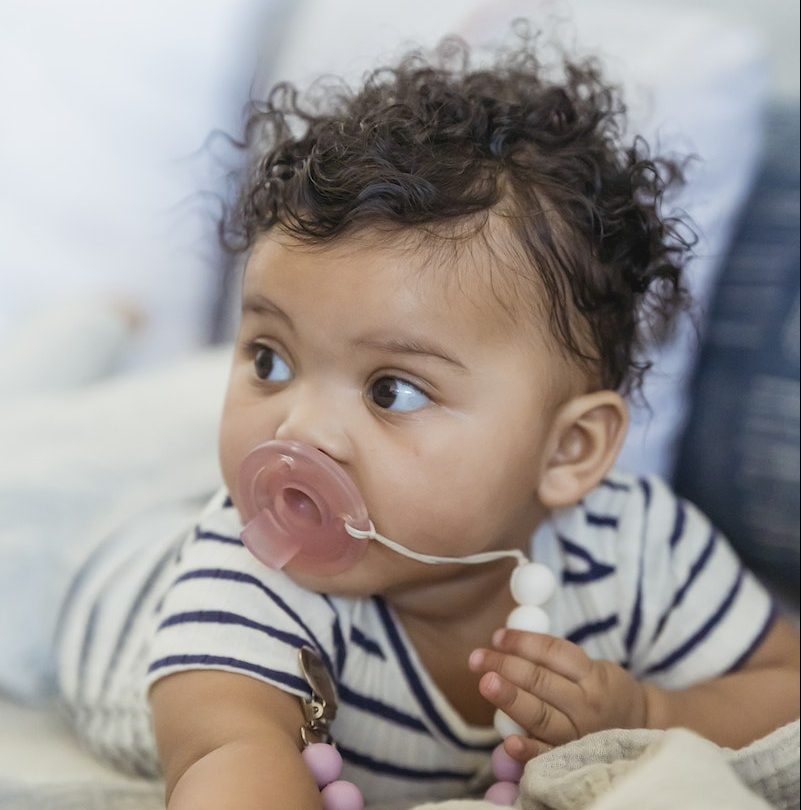
How To Introduce A Pacifier To A Baby?
We said this is a tricky challenge. But do not worry, we have a couple of tips for how to get your baby to take a pacifier.
First and foremost, shop for one that is designed for the age of your baby. All pacifiers are labeled with age ranges. There are also a variety of nipples to choose from, and you can try a different one until you land on the one your baby loves. With that in mind, here are some tips.
Try Different Brands And Shapes
Do not quit after the first failure. Michael Jordan said once, “I’ve failed over and over and over again in my life. And that is why I succeed”. Persistence is the key here. If your baby hates one pacifier, it doesn’t mean you cannot try a different brand.
There are so many brands and shapes to choose from. Yes, that would mean paying more money for products you will not use. But hey, it takes time to stumble upon the perfect binky.
Wait For Your Baby To Be Relaxed
Do not try to get a pacifier for a baby when it is fussy or crying. In the beginning, you have to condition your baby to take a pacifier when it is relaxed. Yes, in the end, you will use it to calm and soothe a baby that is crying. But if your baby refuses the pacifier in a relaxed state, do not expect it to take it in a crying state.
Offer After Feeding
Introduce the pacifier after feedings. Why? Because your baby will be full at this point and know that this nipple type will not provide milk. Instead, it will satisfy its sucking needs. If your baby is hungry and you offer a pacifier, it will further upset your child. Nothing comes, and he/she is hungry. And the artificial nipple doesn’t provide food.
Introduce It For Fun
Babies do not understand the concept of fun at such early age. But you should try and make it fun for your baby. We said to offer it in relaxed times. Well, another option is when your baby is having fun. And then continue the fun.
Dip It In Breast Milk Or Formula
You can dip the pacifier in breast milk or formula milk to entice it to take it into the mouth. Babies will suck it because of breast milk.
It is a helpful trick for a baby taking a pacifier for the first time.
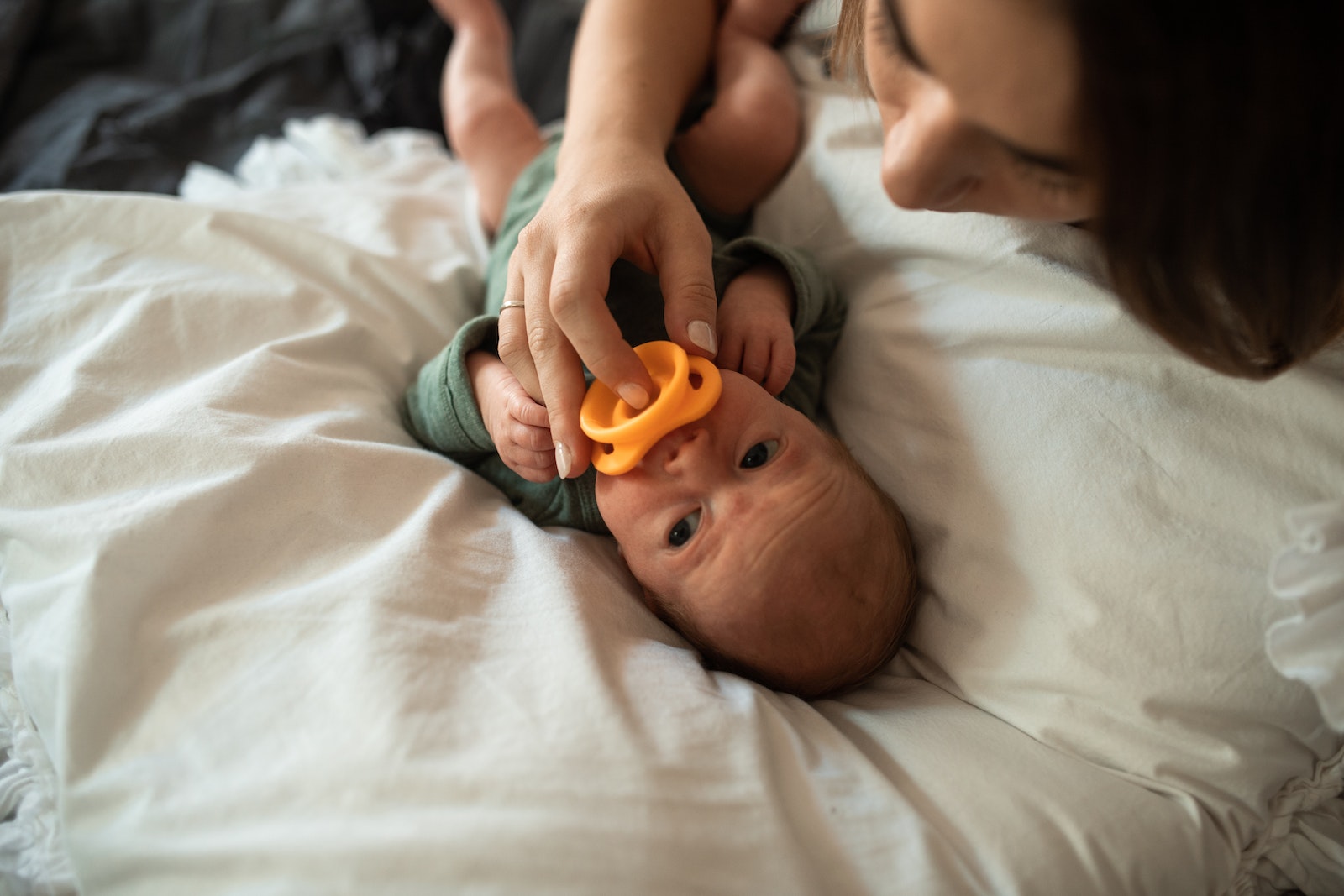
Pretend You Are Breastfeeding
Some babies are milk snobs. They are only interested in human nipples and not artificial nipples. It can be hard to get those babies in a pacifier. Well, try using your nipples as an introduction to the pacifier.
Swap in the pacifier the moment you are done feeding. It is the old trick of bait and switch. And the quicker you do it, the less likely is your baby to refuse the pacifier and notice the difference.
They will not have time to realize what is happening.
Make The Pacifier Warm
Another trick you can use is warming the pacifier. This type of pacifier mimics the feeling of the breast for your baby. Do not leave it on the counter to wait. Instead, wrap it in a warmed cloth, dip it in warm water, or warm it with your hands.
It should be body temperature, not too hot.
Pull It Slightly To Get The Baby To Suck
This simple trick can get your baby to continue sucking. After your little one takes the pacifier, wait for a pause, gently pull it like you are going to get it, and then wait for a reaction.
In most cases, your baby will start sucking again and pull the pacifier into its mouth.
Let Someone Else Offer The Pacifier
Here is a dirty little secret. Babies might accept things from strangers. Try having a caretaker offer and introduce the pacifier to your baby.
Be Patient
Whatever you do, be patient. It is a marathon, not a sprint. The pacifier will save you from so many headaches. It is worth trying to get it inside your baby’s mouth and learning how to get your baby to take the pacifier.
How To Keep It In The Baby’s Mouth?
Some babies shun the pacifier. But do not worry. You can get it back there. We talked about the bait-and-switch trick. Reverse psychology works in this case.
Pull on the binky a bit every time your baby gives it a suck. By the end, your baby will be relaxed and sucking will slow down. Then, slide the pacifier between your baby’s lips.
How To Make Sure Your Baby Sucks Safely?
Here are some tips on how to keep pacifier sucking safe. After all, you do not want any harm to happen to your newborn baby, right?
- Opt for silicone pacifiers, namely a clear silicone pacifier instead of a rubber pacifier
- Do not dip the pacifier into harmful substances. Yes, you can dip it in breast milk, but not in syrup or anything like that
- Wash your pacifier daily to prevent any bacteria
- Do not use it to delay meals for more than a few minutes
- Never hang it around the baby’s neck
- Do not use a bottle nipple as a pacifier
- Inspect the nipples every once in a while to make sure it hasn’t torn
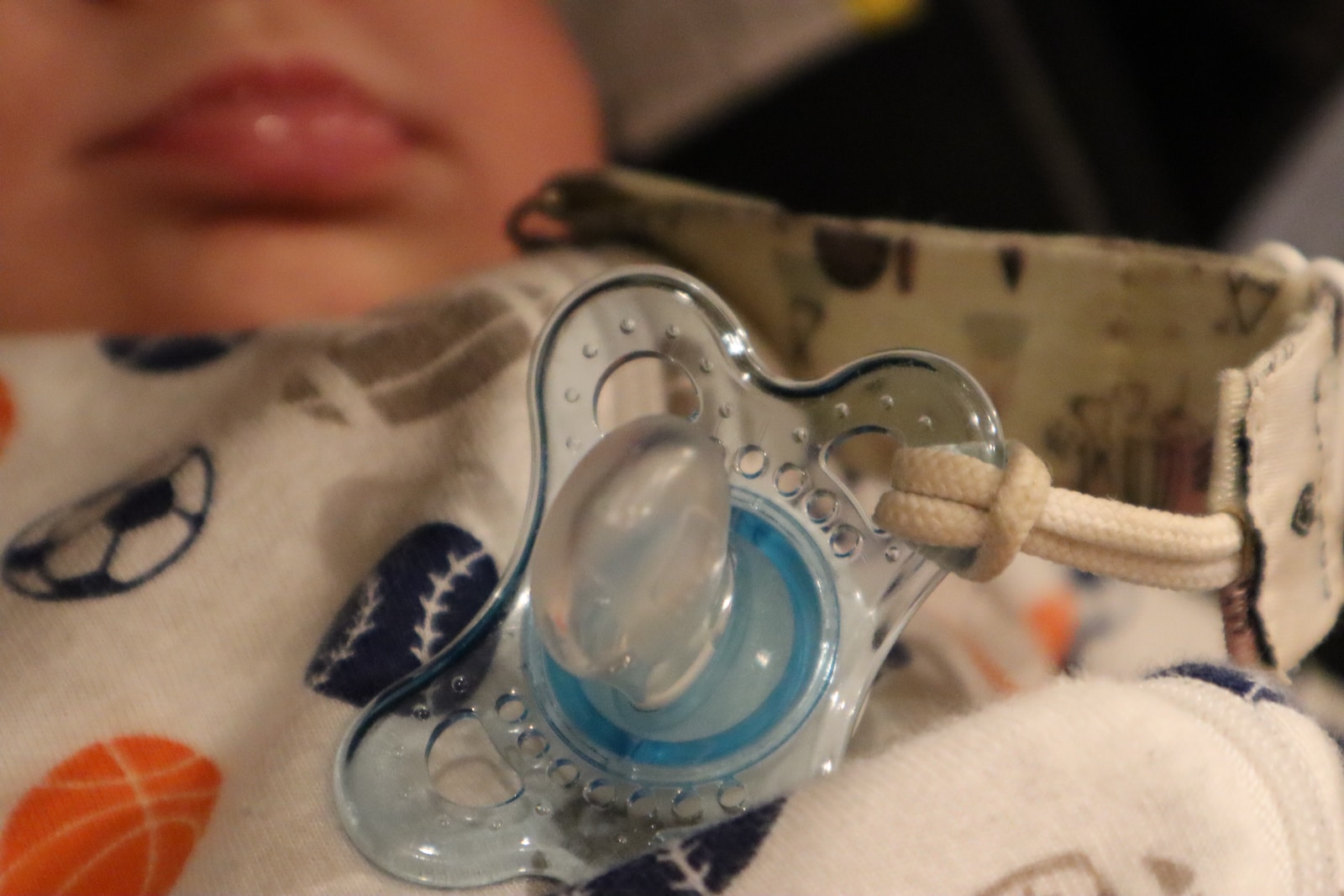
When To Stop Using It?
There is no rush to stop using a pacifier. These provide great emotional support and help any mothers. Little ones can use it for up to 3 years. And they are great for transition or stress. For example, when your kid is sick when your kid is starting daycare, traveling to a new place, or any other similar situation
Going Without A Pacifier
There is a saying you cannot force a baby to poop, eat, or sleep. And that is true, but you can also add take a pacifier to that list.
There are benefits to using a pacifier. It is a huge convenience for new parents. But it is not a necessity. Your baby will be just fine if it never takes a pacifier.
The challenge is, without a pacifier, you will have to find other creative and alternative ways to distract and soothe your newborn baby.
Are There Any Risks Of Using A Pacifier?
The most important risks are failure of breastfeeding, recurrent ear infections, dental deformities, and possible accidents.
Breastfeeding fails only if you use the pacifier to delay nursing sessions. Once the baby develops teeth, they might bite through the nipple, and cause dental issues. So, make sure to check the pacifier for wear and tear.
Is It Too Late For A Pacifier?
Better late than never, right? It is never too late to introduce a pacifier to a baby. They can be given at any age after birth.
But generally speaking, you should introduce it in the first year. After the early weaning process, your child will be less likely to take a baby pacifier if it hasn’t had one before.
There is no right time, but between 3 and 6 months is the sweet spot.

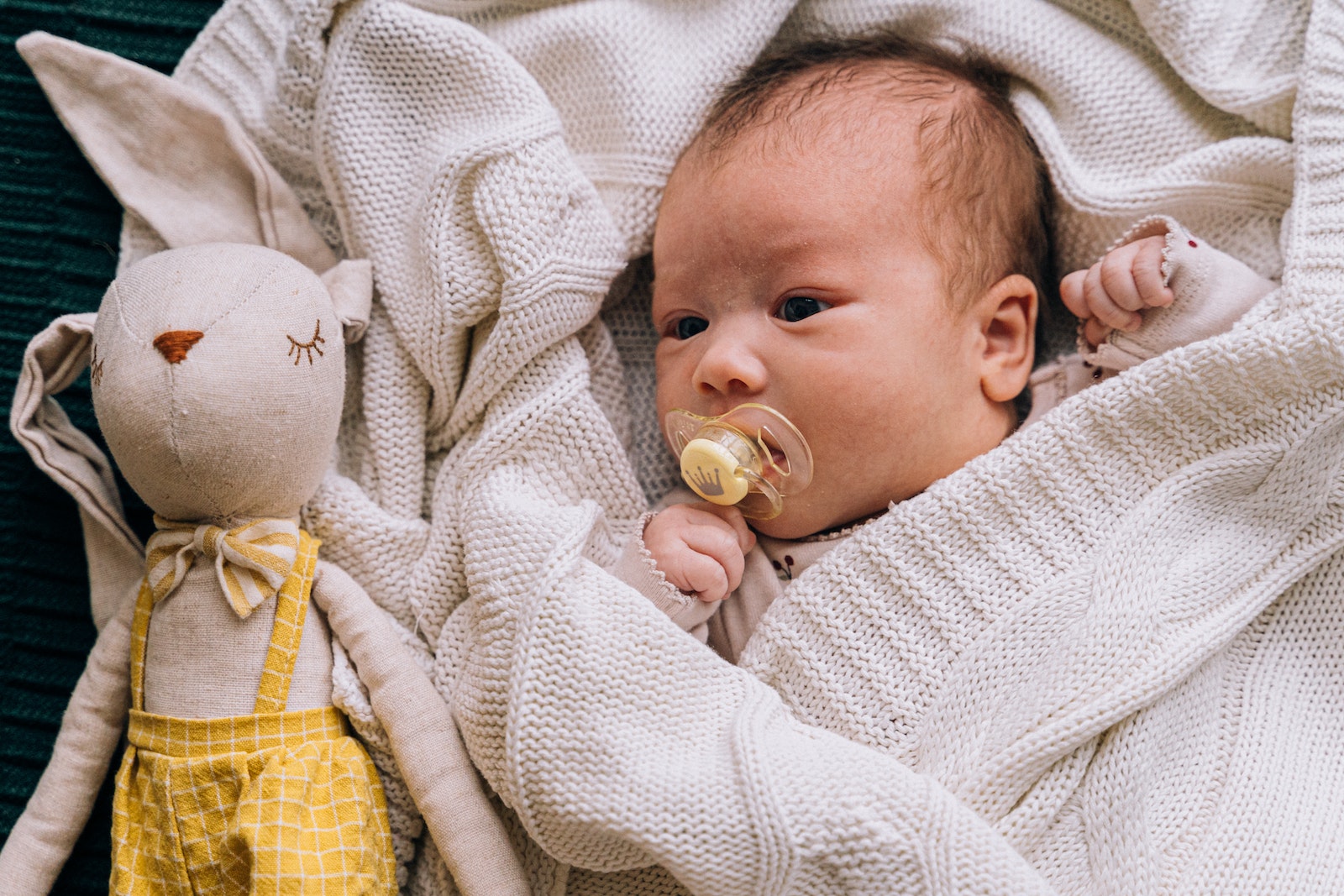
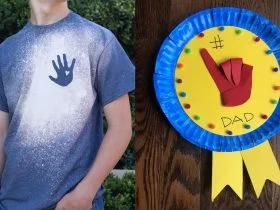
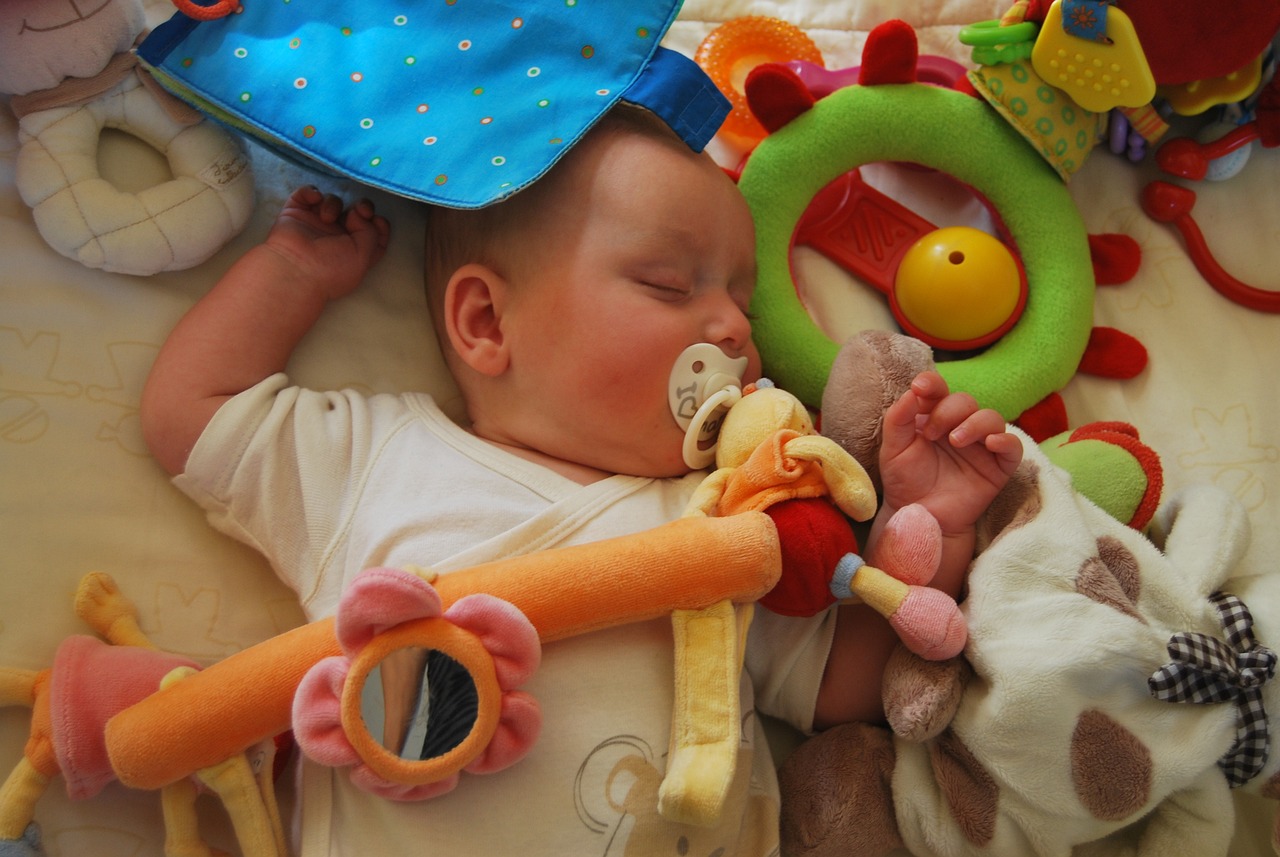




Leave a Reply
View Comments